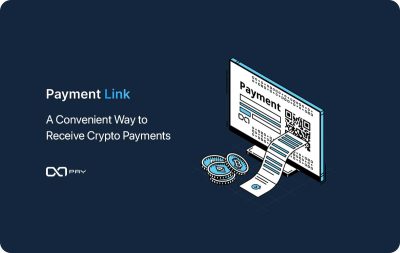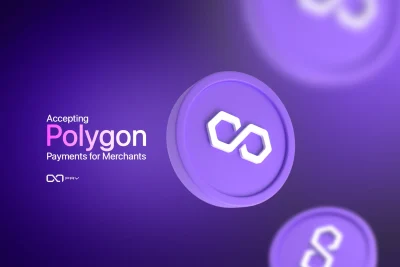Cryptocurrencies are gaining traction across global markets, and many businesses are now exploring how to integrate them into their payment infrastructure. For some, this leads to a pivotal question: should we create our own crypto payment processor from scratch, or is there a smarter, more efficient way to achieve the same level of customization and control?
This guide helps you understand the technical, strategic, and operational considerations involved and introduces a flexible alternative: white-label crypto payment solutions.
What Is a Crypto Payment Processor?
A crypto payment processor is a system that enables businesses to accept cryptocurrency transactions from customers. It functions as an intermediary between the customer and the blockchain network, handling transaction validation, coin conversion (if needed), and integration with the merchant’s existing systems. Unlike standard merchant services that merely provide buttons and addresses, a full processor handles settlement logic, confirms payments, and ensures proper reporting and automation.
🔍 Crypto Payment Processor vs. Payment Gateway
While the terms are often used interchangeably, they serve different roles:
- Payment Gateway: Acts as the interface between the customer and your system. It collects payment details, creates invoices, and initiates the transaction flow. Think of it as the “front door” for payments.
- Payment Processor: Handles the behind-the-scenes logic, verifying transactions, broadcasting them to the blockchain, managing confirmations, handling retries, and performing security and settlement tasks.
In short, the gateway talks to the customer, while the processor talks to the blockchain.
Crypto Payment Gateway vs. Crypto Payment Processor: Key Differences
Why Businesses Want Their Own Processor
Many businesses seek a payment system aligned with their brand and workflow. Here’s why:
- They want full control over branding, from the visual interface to domain and URLs.
- They need custom payment flows, such as dynamic billing rules or multi-step confirmations.
- Integration with internal systems like CRM, user management, or financial tools is often critical.
- As volume scales, they aim to reduce third-party fees and improve operational margins.
- They require full access to transactional data, including retries, user behavior, and conversion paths.
- In certain jurisdictions, they need payment systems independent of local banks or compliance restrictions.
Creating or owning a crypto payment processor offers strategic autonomy, especially for businesses targeting global markets or requiring advanced logic that general-purpose gateways don’t support.

How to Create a Crypto Payment Processor From Scratch
Building a crypto payment processor from scratch involves several critical components:
1: Plan Your Architecture
- Choose supported coins and chains
- Decide on wallet types (hot, cold, static, dynamic)
- Outline how transactions will be tracked and matched
2: Build Core Infrastructure
- Connect to blockchain nodes
- Generate invoices with expiration and retry logic
- Set up webhooks for real-time updates
3: Secure Everything
- Store private keys securely
- Implement HTTPS, DDoS protection, and encryption
- Log and monitor all activity
4: Create Interfaces
- Build a merchant dashboard or API
- Optionally design payment pages
5: Ensure Compliance
- Understand KYC/AML rules
- Handle legal, accounting, and support operations
Major Challenges of Building One Yourself
Creating a crypto payment processor is complex. Below are the key challenges and their requirements in a streamlined format:
| Challenge | Why It’s Tough | What It Requires |
| Technical Complexity | Secure address generation, real-time transaction tracking, error handling | Blockchain expertise, strong dev team |
| Security | Protecting wallets, private keys, and preventing attacks | Advanced security design, encryption |
| Blockchain Integration | Supporting multiple chains, managing gas/fees, handling different protocols | Deep protocol knowledge, multi-chain development team |
| Compliance | KYC/AML considerations, transaction logging, regional regulation differences | Legal guidance, compliance tools |
| Maintenance & Uptime | Node crashes, API changes, chain forks, constant monitoring | 24/7 monitoring, backup infrastructure, alert systems |
| Time & Cost | Long dev cycles, legal consultations, and high infrastructure costs | 6–12 months dev time, dedicated team, high investment |
Key Takeaways:
- Building a processor goes far beyond writing code, it demands secure infrastructure, legal clarity, and ongoing updates.
- Without a multi-disciplinary team, businesses risk delays, vulnerabilities, or compliance failures.
- For most companies, building from scratch is a long, expensive path that rarely delivers a faster go-to-market.
Is There a Better Way to Build a Custom Payment System?
After considering the significant challenges of building a crypto payment processor from scratch, legal hurdles, security risks, dev team requirements, ongoing maintenance, it’s fair to ask:
“Is full development the only way to own a branded payment solution?”
For many businesses, the answer is no.
While the desire to operate a payment system under your brand is valid, building everything from zero is rarely the most efficient path. Fortunately, a smarter approach exists, one that offers ownership, branding, and flexibility without forcing you to reinvent the wheel.
This approach is called a White Label Crypto Payment Processor.
But how does it work?
How is it different from simply using a generic payment gateway?
And can it truly meet your brand and control requirements?
Let’s break it down.
What Is a White Label Crypto Payment Processor?
A white label crypto payment processor is a turnkey crypto payment solution that lets you operate a full-featured payment gateway under your own branding, while the infrastructure, backend logic, and security are maintained by a trusted provider.
You retain visual and operational control, from the payment interface to the user experience, while skipping the complexities of compliance, transaction processing, and blockchain integrations.
In simple terms:
It’s your payment system. Just not your engineering headache.
How Is It Different from a Generic Payment Gateway?
A traditional crypto payment gateway allows merchants to accept crypto, but under shared branding and fixed flows. You use the provider’s interface, domain, payment URLs, and logic.
With a white label solution, however:
- The interface looks and feels like it was built by your company.
- Payment pages use your domain and design.
- Customers interact only with your brand.
- You manage custom rules, settings, and behaviors via API or panel.
| Feature | Generic Gateway | White Label Processor |
| Branding | Provider’s | Yours |
| Control over payment flow | Limited | Full |
| User-facing domain | Shared | Custom |
| Custom invoice and URL design | No | Yes |
| Backend customization | Minimal | Extensive |
| Client interaction | With provider | With your business |
A white label solution gives you the freedom of ownership, without the burden of reinventing every part of the system.
Can a White Label Solution Truly Meet Brand and Control Needs?
Yes, if the provider is flexible, secure, and developer-friendly.
A high-quality white label processor lets you:
- Fully integrate with your platform via API
- Apply custom confirmation rules, payment logic, and expiration timers
- Control supported coins and networks (e.g., allow USDT only on TRC20)
- Automate events like payment_completed or invoice_expired with webhooks
- Match the design/UI to your branding guidelines
- Decide how funds are handled: hold, convert, auto-withdraw, etc.
The key is choosing a provider that not only offers a flexible infrastructure, but also treats your business as a true operator, not just a client.
Branding Your Business with White Label Payment Gateway Solution
Can White Label Solutions Truly Replace Building from Scratch?
Yes, and in many cases, they do it better.
White label crypto payment processors aren’t just shortcuts; they’re strategic enablers. They satisfy the core reasons businesses want their own systems in the first place:
- Brand Ownership: Full control over design, domain, and customer-facing UI.
- Custom Logic: Tailor confirmation rules, supported coins, and expiration settings.
- Operational Flexibility: Choose between static addresses, dynamic invoicing, or both.
- Regulatory Adaptability: Apply business-specific KYC/AML logic when needed.
- User Trust: Build customer confidence with a unified, branded experience.
For most companies, these capabilities cover 90% or more of what a custom-built processor would achieve, without the months of development, legal reviews, and security risks.
If your goal is to operate a crypto payment system that looks and behaves like your own, a powerful white label solution doesn’t just help, it often outperforms the original plan.
Who Offers White Label Crypto Payment Solutions?
Not every crypto payment gateway offers white label capabilities. In fact, most providers only allow merchants to use pre-defined checkout pages under the provider’s domain, limiting customization and control.
However, OxaPay goes further.
OxaPay offers a powerful, fully-documented White Label Crypto Payment Processor that lets businesses launch their own branded payment infrastructure, without building the backend themselves.
Unlike generic merchant tools, OxaPay’s white label solution gives you operational control, complete brand ownership, and the flexibility to define how crypto payments function within your business.
So what exactly makes it different?
Let’s explore.

Why OxaPay White Label Is the Smarter Choice
OxaPay White Label lets businesses create their own crypto payment processor under their brand, without starting from scratch. With developer-friendly APIs, support for static wallets or dynamic invoices, flexible fund handling, and real-time analytics, it combines power with simplicity. No KYC, fast deployment, and multi-chain support make it ideal for businesses seeking full control, speed, and global reach, without the complexity of full infrastructure management.
Who Is It For?
OxaPay’s White Label Processor is ideal for businesses that:
- Want to offer a crypto payment service under their own name
- Need full design and domain control to match their brand
- Require API-level integration with their platform
- Serve customers in different regions, with specific compliance rules
- Want to generate revenue from other merchants using their processor
- Prefer to avoid building complex blockchain infrastructure from scratch
- Need scalable, secure, and adaptable payment tools for crypto acceptance
If your business needs more than just a basic payment button, and you’re serious about owning the customer experience, this is built for you.
How to Get Started with OxaPay White Label
Getting started is straightforward and fast:
- Sign Up on OxaPay and get your Merchant API key
- Access the White Label API Endpoint and set your brand, payment logic, coins, and styling
- Generate Custom Payment Links to embed in your app, site, or service
- Receive Crypto Payments from your users under your domain, with your branding
- Manage Everything from your OxaPay panel or programmatically via API
- Withdraw or Convert funds according to your operational flow
There’s no long onboarding or infrastructure delays. You can go live in a single day.
How to Integrate a White Label Crypto Payment Gateway with OxaPay
From Idea to Execution, Without the Engineering Headache
Let’s return to where we began.
You wanted a crypto payment processor with your brand, your logic, and your rules.
You considered building one from scratch, then saw the cost, time, and complexity.
Now, with OxaPay White Label, you can:
✅ Deliver a fully branded crypto checkout
✅ Keep control over every payment behavior
✅ Go live fast, without writing a backend
✅ Scale globally, with security and compliance built-in
You don’t need to build the infrastructure.
You just need to own the experience.
OxaPay lets you do exactly that.
Conclusion
Creating a crypto payment processor from scratch is possible, but rarely practical. With a white label solution like OxaPay’s, you get the best of both worlds: the ability to create a crypto payment processor under your brand and complete ownership of the payment experience, without the backend burdens.
OxaPay empowers businesses to launch, scale, and operate branded crypto payment platforms without deep engineering resources or compliance overhead.
If you’re ready to turn your crypto payment vision into a reality, without rebuilding the blockchain, start with OxaPay’s White Label today.
👉 Explore the White Label Solution on OxaPay




